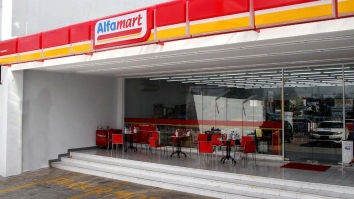Future of retail: Is Asia ready for buy now, pay later?
As we head into the second half of the year, it’s become apparent to Asia’s retail sector that recovery in spending to pre-COVID-19 levels will be slow and protracted. The initial rush to spend after months of lockdowns has dissipated. Many consumers have turned cautious and are tightening their wallets.
This is especially true of Generation Z and Millennials, some of whom are now facing the prospect of graduating without a job lined up, or else have recently lost their job due to the pandemic’s impact on business and the economy.
In Singapore, 87 per cent of survey respondents said the pandemic is forcing them to spend less and save more. Other factors such as “is it safe to go out?” or “what’s there to spend on if there’s nowhere to go?” also contribute to this reluctance to spend.
But waiting and hoping is not a strategy for Asia’s retailers.
Having a digital and omnichannel strategy goes some way into bringing your goods to your customer’s doorstep, but it does not help them open their wallets. And it’s not just the retail industry that’s trying to find a way out of this COVID-19 induced demand and supply shock.
In the UK, a start-up called Fly Now Pay Later has introduced flexible travel options to get people flying again. Asia’s hoteliers are offering innovative “buy now, travel later” packages to keep their staff employed and to kickstart the tourism industry.
Car manufacturers are offering buy now, deferred payment plans to encourage car sales. Employers in Singapore are even offering work now, pay later time-banking methods to avoid painful cost cuts.
Fortunately, in the retail sector, a proven business model that balances the needs of both shoppers and retailers already exists: buy now, pay later (BNPL).
In fact, the impressive growth of BNPL pioneers Klarna, Afterpay, and Sezzle across Europe, Australia, and the US has only accelerated in recent months as the companies reached new highs. Troubling times also call for new partnerships and innovation.
So why hasn’t BNPL taken off in Asia like it has in other parts of the world? I would posit the following three reasons.
Lack of consumer education
Much of the negative discourse around BNPL is that it fuels consumer debt, especially amongst Gen Zs and Millennials. The entire BNPL business model depends on sustained and continued spending from this consumer set.
Having to suspend their account because they are unable to meet scheduled instalments does no one any good. In general, BNPL late payment fees are also capped which means this cannot be a sustainable way to grow a business.
Lack of merchant education
The second reason is that most retailers are still not clear about the value of BNPL and how it benefits their business. BNPL is unlike traditional in-store payment or credit card instalment plans in so many ways; amongst them a much lower minimum spend, no customer-facing service or processing fee, and a near instant approval rate.
Much more than simply being a way to pay, BNPL offers a chance for retailers to better understand their customer habits and preferences and over time, tailor an improved and personalised shopping experience. Which retailer wouldn’t want a longer and closer relationship with their customer?
Lack of data in emerging economies
The third reason I would suggest is this: in every market they enter, BNPL companies rely on the availability and accuracy of data to help manage the risk that comes with consumer financing.
In many emerging economies across Asia where large swathes of the population are either unbanked or underbanked, the availability of this data is scarce, unreliable or even non-existent.
The onus then is on the BNPL company to up its risk and underwriting capabilities to be able to match local market conditions, regulations, and even products (e.g. jewellery vs dress).
The way forward
How, then, do Asia’s retailers go forward from here?
Globally, Gen Z and Millennials have similar characteristics which cannot be denied, such as a mobile-first mindset, a need for self-expression and identity fuelling how they buy, and a desire to better manage their finances.
In BNPL, the retail industry in Asia already has a ready and tailor-made solution at its door to help power its recovery. The question is whether or not retailers are ready to embrace new partnerships, business models, and technology.
Let’s get to work.























 Advertise
Advertise







